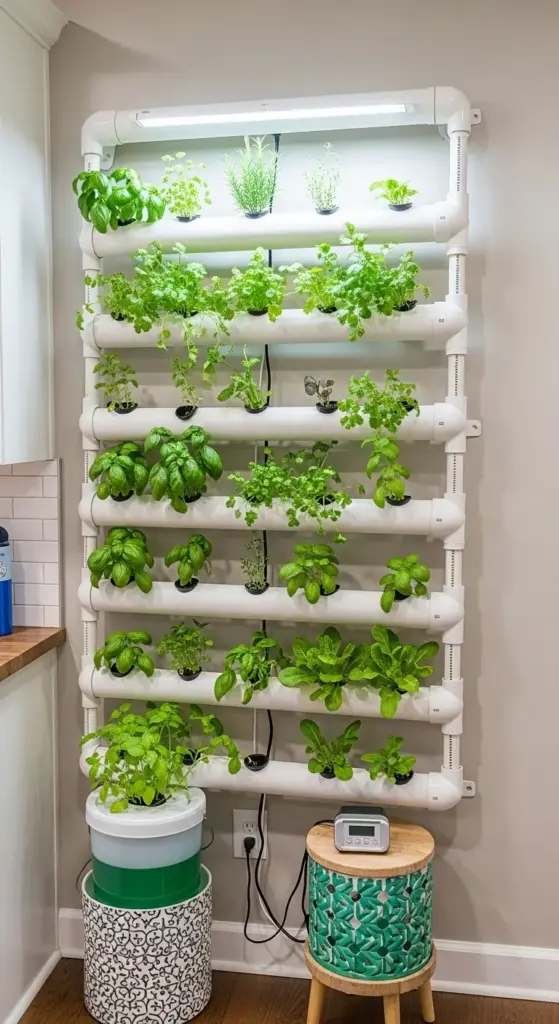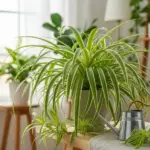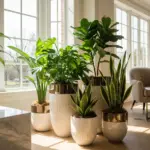2. The Hydroponic Herb Garden Wall System

I’ll never forget the first time I walked into my friend Sarah’s Chicago apartment and saw her hydroponic herb garden covering an entire kitchen wall. Fresh basil, cilantro, and mint growing right there next to her stove – it was like something out of a fancy cooking show.
I was instantly obsessed.
But here’s what nobody tells you about vertical hydroponic systems – my first attempt was an absolute mess. Water everywhere, dead plants, and a very angry landlord.
My DIY Setup That Actually Works
After three failed attempts and way too much money spent, I finally cracked the code on kitchen wall gardens.
Start with a vertical growing system that has built-in drainage. I use PVC pipes with holes drilled every 6 inches – sounds complicated but it’s really not.
Mount the pipes at a slight angle so water flows naturally. This was my biggest mistake initially – I had them perfectly level and water just sat there getting gross.
Connect everything to a small water pump that runs for 15 minutes every 2 hours. You can get a decent timer pump for about $40 on Amazon.
The nutrient solution goes in a 5-gallon bucket hidden behind a decorative screen. Nobody needs to see your water reservoir, trust me.
Herbs That Won’t Let You Down
I’ve killed more herbs than I care to admit, so let me save you some heartache with my vertical herb garden winners.
Basil is absolutely foolproof in hydroponic systems. It grows like crazy and you’ll be making pesto every week.
Cilantro thrives in these setups, especially if you keep harvesting the outer leaves. Mine produces fresh cilantro for months.
Here’s something I learned the hard way – avoid rosemary and thyme in hydroponic systems. They prefer drier conditions and just don’t do well with constant moisture.
Lettuce varieties work amazingly well too. I grow butter lettuce and arugula year-round now.
Stylish Containers That Don’t Scream “Science Project”
The biggest challenge with hydroponic wall gardens is making them look intentional, not like you’re conducting experiments in your kitchen.
I use white PVC pipes painted with chalk paint to match my cabinets. The matte finish looks so much more sophisticated than shiny plastic.
For a more industrial look, galvanized steel gutters work perfectly and blend with modern home decor styles.
My favorite trick – wrap the pipes in natural jute rope. It adds texture and hides any imperfections in your DIY work.
Mason jars work great for individual herb plants if you want a more rustic vertical garden design.
Lighting That Won’t Break the Bank
LED grow lights used to be crazy expensive, but now you can get full-spectrum strips for under $50.
Mount them about 12 inches above your plants. I learned this after frying my first batch of herbs with lights that were way too close.
Timer controls are essential – herbs need about 14-16 hours of light daily. Set it and forget it is the way to go here.
For kitchen lighting that doubles as grow lights, look for under-cabinet LED strips with the right spectrum. They serve dual purposes and look completely normal.
Harvesting and Cooking Integration
This is where hydroponic herb gardens really shine compared to regular potted herbs.
Harvest in the morning when the plants are most hydrated. I usually grab what I need while my coffee brews.
Cut just above a leaf node to encourage new growth. My basil plants have been producing for over 8 months now using this method.
Pro tip from my Italian grandmother – never wash herbs right after harvesting from hydroponic systems. They’re already clean and washing removes essential oils.
Keep kitchen shears mounted right next to your vertical herb garden for easy access while cooking.
The indoor gardening revolution is real, and having fresh herbs literally at your fingertips changes how you cook completely.
Want to add some serious drama to your plant wall game? Click below to discover how to create stunning cascading succulent displays that look like living chandeliers – no green thumb required!









GIPHY App Key not set. Please check settings